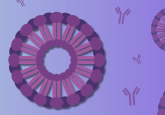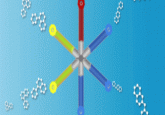Proteins… assemble!

Protein LEGO blocks can self-assemble into complex supramolecular structures.

Scientists from Shinshu University (Japan) have developed new proteins that can self-assemble into a variety of complex nanostructures, creating hope that these can be further developed for use as a drug delivery system or as artificial vaccines.
“All organisms contain self-assembling biomolecules including proteins, nucleic acids, sugars, and lipids,” the authors of the paper – published in Synthetic Biology – wrote. “The ability to design and control such assemblies is a central goal of biomolecular engineering, nanobiotechnology, and synthetic biology.”
The researchers had previously developed an artificial protein, termed WA20, and protein nanobuilding blocks (PN-Blocks) that enable the WA20 to self-assemble into nanostructures. They then moved on to develop extender PN-Blocks that could link the WA20 proteins into more complex nanostructures.
The benefits of this approach are that the proteins can be developed into many different nanostructures, despite how little variety there is between the individual pieces.
“The design and construction of self-assembling PN-Blocks is a useful strategy – they’re like LEGO blocks,” commented Ryoichi Arai, author of the paper and head of the department of supramolecular complexes in the Research Center for Fungal and Microbial Dynamism at Shinshu University.
In this study, two WA20 blocks were linked in tandem by the extender PN-Blocks, creating oligomeric structures. Another PN-Block (sPN-Block) was then used; causing the structures to differentiate. The supramolecular structures were then formed by the introduction of a metal ion, leading to further self-assembly.
“These results demonstrate that the PN-Block strategy is a useful and systematic strategy for constructing novel nano-architectures,” concluded Arai.
The researchers now hope that they can create many different stable nanostructures with various functions through combinations of PN-blocks and metal ions. They believe that this could be utilized in the development of a drug delivery system or contribute to the creation of an artificial vaccine.





